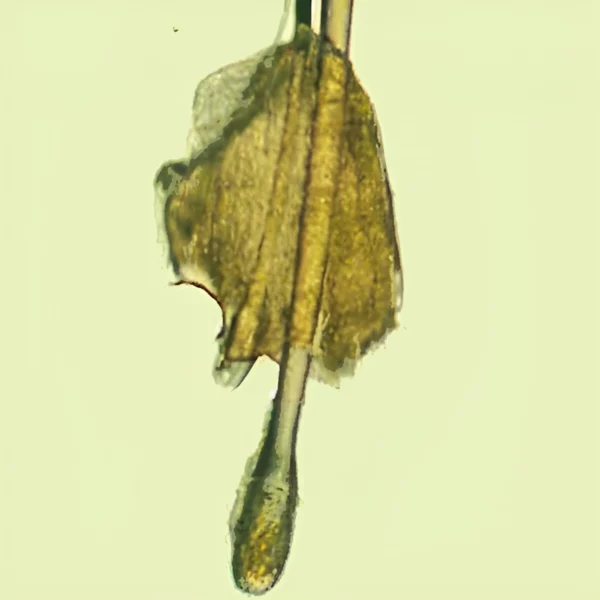Androgenetic alopecia (AGA), commonly known as pattern hair loss, impacts hundreds of millions of people worldwide and often carries significant psychological and social burdens. While reports vary, most epidemiological studies agree that between 1.0 and 1.5 billion individuals are affected. Below, we explain in detail how these global estimates are derived and why different assumptions yield figures across that range.
Estimating the Global Affected Population: We start by estimating the global population:
Starting Population: The total world population in 2024 is approximately 8 billion people. Since AGA prevalence before age 30 is generally very low, we focus on adults aged 30 and above , who collectively represent around 45 percent of the global population (≈ 3.6 billion individuals). Age-Group Breakdown: Ages 30–49 : roughly 25 percent of all people (≈ 2.0 billion).Ages 50–69 : roughly 15 percent (≈ 1.2 billion).Ages 70 and older : roughly 5 percent (≈ 0.4 billion). Prevalence Rates by Age and Sex: We assume an even (50/50) split between men and women within each age bracket. Based on large-scale epidemiological surveys:
Men Ages 30–49: 30 percent have AGA Ages 50–69: 50 percent have AGA Ages 70+: 70 percent have AGA Women Ages 30–49: 10 percent have AGA Ages 50–69: 30 percent have AGA Ages 70+: 40 percent have AGA Calculating the Numbers: For each age bracket, we first determine the number of men and women, then apply the prevalence rate:
Ages 30–49 (2.0 billion total) Men: 1.0 billion × 30 percent = 0.30 billion Women: 1.0 billion × 10 percent = 0.10 billion Ages 50–69 (1.2 billion total) Men: 0.6 billion × 50 percent = 0.30 billion Women: 0.6 billion × 30 percent = 0.18 billion Ages 70+ (0.4 billion total) Men: 0.2 billion × 70 percent = 0.14 billion Women: 0.2 billion × 40 percent = 0.08 billion Total Summation: Summing across age groups yields:
Men affected : 0.30 + 0.30 + 0.14 = 0.74 billion Women affected : 0.10 + 0.18 + 0.08 = 0.36 billion Combined total : 0.74 + 0.36 = 1.10 billion Why Real World Estimates Rise Toward 1.5 Billion: Several factors push the upper bound of published estimates toward 1.5 billion:
Lower Age Thresholds: Including adults aged 20–29 (who may exhibit early signs of AGA) adds roughly 5–8 percent more of the population into the calculation.Higher Prevalence in Specific Cohorts: Some studies report that up to 50 percent of women aged 50–69 have noticeable hair thinning, rather than 30 percent. Likewise, certain male populations reach 50 percent prevalence by age 40.Growing Elderly Demographics: Projections that the over-70 population will exceed 6 percent (instead of 5 percent) increases the count of those in the highest-risk bracket.Variations in Data Collection: Clinical-examination studies often report higher prevalence than self-reported surveys, and meta-analyses combine both, widening the range. By adjusting our base parameters – for example, assuming 50 percent prevalence among women 50–69 and that 6 percent of all people are aged 70+ across the world – we can recalculate:
Men affected ≈ 0.82 billion Women affected ≈ 0.58 billion Combined total ≈ 1.40 billion Conclusion: A carefully structured calculation, grounded in UN demographic data and cited hair loss prevalence rates, yields an estimated 1.10 billion people with AGA worldwide. Allowing for demographic shifts, broader age inclusion, and higher prevalence figures raises this to as much as 1.4–1.5 billion , in line with the numbers quoted in published reviews (e.g. McElwee & Sundberg 2025). Regardless of the precise figure, it is clear that more than one billion individuals live with androgenetic alopecia, highlighting the condition’s substantial global impact and the importance of continued research and therapeutic development.
Bibliography
11711645 {11711645:UI3TXI8U},{11711645:3H7KED3Z},{11711645:6B5J8SD2},{11711645:AT5U2429},{11711645:JJPD6ZJ5},{11711645:PREXE8CH},{11711645:GXTZHT5Y},{11711645:QPD7EXI7},{11711645:UH95MNKB},{11711645:U4777A78},{11711645:KNGJHWD6},{11711645:BANVF3AA} 1 vancouver 50 date asc 1856 https://www.keratin.com/wp-content/plugins/zotpress/ %7B%22status%22%3A%22success%22%2C%22updateneeded%22%3Afalse%2C%22instance%22%3Afalse%2C%22meta%22%3A%7B%22request_last%22%3A0%2C%22request_next%22%3A0%2C%22used_cache%22%3Atrue%7D%2C%22data%22%3A%5B%7B%22key%22%3A%22UI3TXI8U%22%2C%22library%22%3A%7B%22id%22%3A11711645%7D%2C%22meta%22%3A%7B%22creatorSummary%22%3A%22Hamilton%22%2C%22parsedDate%22%3A%221951-03%22%2C%22numChildren%22%3A0%7D%2C%22bib%22%3A%22%26lt%3Bdiv%20class%3D%26quot%3Bcsl-bib-body%26quot%3B%20style%3D%26quot%3Bline-height%3A%201.35%3B%20%26quot%3B%26gt%3B%5Cn%20%20%26lt%3Bdiv%20class%3D%26quot%3Bcsl-entry%26quot%3B%20style%3D%26quot%3Bclear%3A%20left%3B%20%26quot%3B%26gt%3B%5Cn%20%20%20%20%26lt%3Bdiv%20class%3D%26quot%3Bcsl-left-margin%26quot%3B%20style%3D%26quot%3Bfloat%3A%20left%3B%20padding-right%3A%200.5em%3B%20text-align%3A%20right%3B%20width%3A%201em%3B%26quot%3B%26gt%3B1.%26lt%3B%5C%2Fdiv%26gt%3B%26lt%3Bdiv%20class%3D%26quot%3Bcsl-right-inline%26quot%3B%20style%3D%26quot%3Bmargin%3A%200%20.4em%200%201.5em%3B%26quot%3B%26gt%3BHamilton%20JB.%20Patterned%20loss%20of%20hair%20in%20man%3B%20types%20and%20incidence.%20Ann%20N%20Y%20Acad%20Sci.%201951%20Mar%3B53%283%29%3A708%26%23x2013%3B28.%26lt%3B%5C%2Fdiv%26gt%3B%5Cn%20%20%20%26lt%3B%5C%2Fdiv%26gt%3B%5Cn%26lt%3B%5C%2Fdiv%26gt%3B%22%2C%22data%22%3A%7B%22itemType%22%3A%22journalArticle%22%2C%22title%22%3A%22Patterned%20loss%20of%20hair%20in%20man%3B%20types%20and%20incidence%22%2C%22creators%22%3A%5B%7B%22creatorType%22%3A%22author%22%2C%22firstName%22%3A%22J.%20B.%22%2C%22lastName%22%3A%22Hamilton%22%7D%5D%2C%22abstractNote%22%3A%22%22%2C%22date%22%3A%221951-03%22%2C%22language%22%3A%22eng%22%2C%22DOI%22%3A%2210.1111%5C%2Fj.1749-6632.1951.tb31971.x%22%2C%22ISSN%22%3A%220077-8923%22%2C%22url%22%3A%22%22%2C%22collections%22%3A%5B%222D89WSQ5%22%5D%2C%22dateModified%22%3A%222025-05-12T16%3A00%3A25Z%22%7D%7D%2C%7B%22key%22%3A%223H7KED3Z%22%2C%22library%22%3A%7B%22id%22%3A11711645%7D%2C%22meta%22%3A%7B%22creatorSummary%22%3A%22Norwood%22%2C%22parsedDate%22%3A%221975-11%22%2C%22numChildren%22%3A0%7D%2C%22bib%22%3A%22%26lt%3Bdiv%20class%3D%26quot%3Bcsl-bib-body%26quot%3B%20style%3D%26quot%3Bline-height%3A%201.35%3B%20%26quot%3B%26gt%3B%5Cn%20%20%26lt%3Bdiv%20class%3D%26quot%3Bcsl-entry%26quot%3B%20style%3D%26quot%3Bclear%3A%20left%3B%20%26quot%3B%26gt%3B%5Cn%20%20%20%20%26lt%3Bdiv%20class%3D%26quot%3Bcsl-left-margin%26quot%3B%20style%3D%26quot%3Bfloat%3A%20left%3B%20padding-right%3A%200.5em%3B%20text-align%3A%20right%3B%20width%3A%201em%3B%26quot%3B%26gt%3B1.%26lt%3B%5C%2Fdiv%26gt%3B%26lt%3Bdiv%20class%3D%26quot%3Bcsl-right-inline%26quot%3B%20style%3D%26quot%3Bmargin%3A%200%20.4em%200%201.5em%3B%26quot%3B%26gt%3BNorwood%20OT.%20Male%20pattern%20baldness%3A%20classification%20and%20incidence.%20South%20Med%20J.%201975%20Nov%3B68%2811%29%3A1359%26%23x2013%3B65.%26lt%3B%5C%2Fdiv%26gt%3B%5Cn%20%20%20%26lt%3B%5C%2Fdiv%26gt%3B%5Cn%26lt%3B%5C%2Fdiv%26gt%3B%22%2C%22data%22%3A%7B%22itemType%22%3A%22journalArticle%22%2C%22title%22%3A%22Male%20pattern%20baldness%3A%20classification%20and%20incidence%22%2C%22creators%22%3A%5B%7B%22creatorType%22%3A%22author%22%2C%22firstName%22%3A%22O.%20T.%22%2C%22lastName%22%3A%22Norwood%22%7D%5D%2C%22abstractNote%22%3A%22The%20need%20for%20a%20widely%20accepted%2C%20accurate%2C%20and%20reproducible%20standard%20of%20classification%20for%20male%20pattern%20baldness%20has%20increased%20with%20the%20advent%20and%20increasing%20popularity%20of%20hair%20transplant%20surgery.%20This%20report%20establishes%20such%20a%20classification%2C%20and%20reports%20its%20use%20in%20determining%20the%20incidence%20of%20male%20pattern%20baldness%20at%20various%20ages%20in%201%2C000%20white%20adult%20male%20subjects.%20The%20action%20of%20testosterone%20as%20an%20incitant%20in%20male%20pattern%20baldness%20is%20well%20known%2C%20but%20this%20study%20points%20out%20the%20continued%20effect%20of%20time%2C%20even%20in%20later%20years.%20Since%20most%20hair%20transplant%20surgery%20is%20peformed%20on%20subjects%20with%20male%20pattern%20baldness%2C%20and%20because%20the%20success%20of%20hair%20transplant%20surgery%20is%20largely%20dependent%20on%20proper%20patient%20selection%2C%20a%20complete%20understanding%20of%20male%20pattern%20baldness%20is%20essential%20for%20consistently%20good%20results%20with%20hair%20transplantation.%22%2C%22date%22%3A%221975-11%22%2C%22language%22%3A%22eng%22%2C%22DOI%22%3A%2210.1097%5C%2F00007611-197511000-00009%22%2C%22ISSN%22%3A%220038-4348%22%2C%22url%22%3A%22%22%2C%22collections%22%3A%5B%222D89WSQ5%22%5D%2C%22dateModified%22%3A%222025-05-12T16%3A00%3A55Z%22%7D%7D%2C%7B%22key%22%3A%226B5J8SD2%22%2C%22library%22%3A%7B%22id%22%3A11711645%7D%2C%22meta%22%3A%7B%22creatorSummary%22%3A%22Takashima%20et%20al.%22%2C%22parsedDate%22%3A%221981%22%2C%22numChildren%22%3A0%7D%2C%22bib%22%3A%22%26lt%3Bdiv%20class%3D%26quot%3Bcsl-bib-body%26quot%3B%20style%3D%26quot%3Bline-height%3A%201.35%3B%20%26quot%3B%26gt%3B%5Cn%20%20%26lt%3Bdiv%20class%3D%26quot%3Bcsl-entry%26quot%3B%20style%3D%26quot%3Bclear%3A%20left%3B%20%26quot%3B%26gt%3B%5Cn%20%20%20%20%26lt%3Bdiv%20class%3D%26quot%3Bcsl-left-margin%26quot%3B%20style%3D%26quot%3Bfloat%3A%20left%3B%20padding-right%3A%200.5em%3B%20text-align%3A%20right%3B%20width%3A%201em%3B%26quot%3B%26gt%3B1.%26lt%3B%5C%2Fdiv%26gt%3B%26lt%3Bdiv%20class%3D%26quot%3Bcsl-right-inline%26quot%3B%20style%3D%26quot%3Bmargin%3A%200%20.4em%200%201.5em%3B%26quot%3B%26gt%3BTakashima%20I%2C%20Iju%20M%2C%20Sudo%20M.%20Alopecia%20Androgenetica%20%26%23x2014%3B%20Its%20Incidence%20in%20Japanese%20and%20Associated%20Conditions.%20In%3A%20Hair%20Research.%20Berlin%20Heidelberg%3A%20Springer%3B%201981.%20p.%20287%26%23x2013%3B93.%26lt%3B%5C%2Fdiv%26gt%3B%5Cn%20%20%20%26lt%3B%5C%2Fdiv%26gt%3B%5Cn%26lt%3B%5C%2Fdiv%26gt%3B%22%2C%22data%22%3A%7B%22itemType%22%3A%22bookSection%22%2C%22title%22%3A%22Alopecia%20Androgenetica%20%5Cu2014%20Its%20Incidence%20in%20Japanese%20and%20Associated%20Conditions%22%2C%22creators%22%3A%5B%7B%22creatorType%22%3A%22author%22%2C%22firstName%22%3A%22I.%22%2C%22lastName%22%3A%22Takashima%22%7D%2C%7B%22creatorType%22%3A%22author%22%2C%22firstName%22%3A%22M.%22%2C%22lastName%22%3A%22Iju%22%7D%2C%7B%22creatorType%22%3A%22author%22%2C%22firstName%22%3A%22M.%22%2C%22lastName%22%3A%22Sudo%22%7D%5D%2C%22abstractNote%22%3A%22%22%2C%22bookTitle%22%3A%22Hair%20Research%22%2C%22date%22%3A%221981%22%2C%22language%22%3A%22%22%2C%22ISBN%22%3A%22%22%2C%22url%22%3A%22%22%2C%22collections%22%3A%5B%22PZ72GWNP%22%2C%222D89WSQ5%22%5D%2C%22dateModified%22%3A%222024-02-22T17%3A32%3A24Z%22%7D%7D%2C%7B%22key%22%3A%22AT5U2429%22%2C%22library%22%3A%7B%22id%22%3A11711645%7D%2C%22meta%22%3A%7B%22creatorSummary%22%3A%22Birch%20et%20al.%22%2C%22parsedDate%22%3A%222001-02%22%2C%22numChildren%22%3A0%7D%2C%22bib%22%3A%22%26lt%3Bdiv%20class%3D%26quot%3Bcsl-bib-body%26quot%3B%20style%3D%26quot%3Bline-height%3A%201.35%3B%20%26quot%3B%26gt%3B%5Cn%20%20%26lt%3Bdiv%20class%3D%26quot%3Bcsl-entry%26quot%3B%20style%3D%26quot%3Bclear%3A%20left%3B%20%26quot%3B%26gt%3B%5Cn%20%20%20%20%26lt%3Bdiv%20class%3D%26quot%3Bcsl-left-margin%26quot%3B%20style%3D%26quot%3Bfloat%3A%20left%3B%20padding-right%3A%200.5em%3B%20text-align%3A%20right%3B%20width%3A%201em%3B%26quot%3B%26gt%3B1.%26lt%3B%5C%2Fdiv%26gt%3B%26lt%3Bdiv%20class%3D%26quot%3Bcsl-right-inline%26quot%3B%20style%3D%26quot%3Bmargin%3A%200%20.4em%200%201.5em%3B%26quot%3B%26gt%3BBirch%20MP%2C%20Messenger%20JF%2C%20Messenger%20AG.%20Hair%20density%2C%20hair%20diameter%20and%20the%20prevalence%20of%20female%20pattern%20hair%20loss.%20Br%20J%20Dermatol.%202001%20Feb%3B144%282%29%3A297%26%23x2013%3B304.%26lt%3B%5C%2Fdiv%26gt%3B%5Cn%20%20%20%26lt%3B%5C%2Fdiv%26gt%3B%5Cn%26lt%3B%5C%2Fdiv%26gt%3B%22%2C%22data%22%3A%7B%22itemType%22%3A%22journalArticle%22%2C%22title%22%3A%22Hair%20density%2C%20hair%20diameter%20and%20the%20prevalence%20of%20female%20pattern%20hair%20loss%22%2C%22creators%22%3A%5B%7B%22creatorType%22%3A%22author%22%2C%22firstName%22%3A%22M.%20P.%22%2C%22lastName%22%3A%22Birch%22%7D%2C%7B%22creatorType%22%3A%22author%22%2C%22firstName%22%3A%22J.%20F.%22%2C%22lastName%22%3A%22Messenger%22%7D%2C%7B%22creatorType%22%3A%22author%22%2C%22firstName%22%3A%22A.%20G.%22%2C%22lastName%22%3A%22Messenger%22%7D%5D%2C%22abstractNote%22%3A%22BACKGROUND%3A%20Female%20pattern%20hair%20loss%20is%20common%20but%20estimates%20of%20its%20prevalence%20have%20varied%20widely.%20The%20relationships%20between%20the%20clinical%20diagnosis%20of%20female%20pattern%20hair%20loss%20and%20objective%20measurements%20of%20hair%20density%20and%20hair%20diameter%20have%20not%20previously%20been%20evaluated.%5CnOBJECTIVES%3A%20To%20determine%20the%20prevalence%20of%20female%20pattern%20hair%20loss%20and%20to%20relate%20the%20clinical%20findings%20to%20hair%20density%20and%20hair%20diameter.%5CnMETHODS%3A%20We%20examined%20377%20women%2C%20aged%2018--99%20years%2C%20who%20presented%20to%20a%20general%20dermatology%20clinic%20with%20complaints%20unrelated%20to%20hair%20growth%20%28the%20unselected%20sample%29.%20A%20second%20group%20of%2047%20women%20referred%20with%20typical%20female%20pattern%20hair%20loss%20was%20included%20in%20analyses%20of%20the%20relationships%20between%20hair%20density%2C%20hair%20diameter%20and%20the%20clinical%20diagnosis.%20Hair%20density%20was%20measured%20using%20a%20photographic%20method.%20In%20each%20subject%20the%20major%20and%20minor%20axis%20diameters%20were%20measured%20in%20a%20random%20sample%20of%2050%20hairs.%5CnRESULTS%3A%20Six%20per%20cent%20of%20women%20aged%20under%2050%20years%20were%20diagnosed%20as%20having%20female%20pattern%20hair%20loss%2C%20increasing%20to%2038%25%20in%20subjects%20aged%2070%20years%20and%20over.%20The%20mean%20%2B%5C%2F-%20SEM%20hair%20density%20was%20293%20%2B%5C%2F-%2061.3%20hairs%20cm%28-2%29%20at%20age%2035%20years%2C%20falling%20to%20211%20%2B%5C%2F-%2055.1%20hairs%20cm%28-2%29%20at%20age%2070%20years.%20Hair%20density%20showed%20a%20normal%20distribution%20in%20the%20unselected%20sample.%20Most%20women%20classified%20as%20having%20female%20pattern%20hair%20loss%20had%20hair%20densities%20within%20the%20lower%20half%20of%20the%20normal%20distribution.%20The%20perception%20of%20hair%20loss%20was%20determined%20mainly%20by%20low%20hair%20density%20%28ANOVA%20P%20%26lt%3B%200.001%29%2C%20but%20there%20was%20overlap%20in%20hair%20density%20between%20women%20classified%20as%20having%20Ludwig%20I%20hair%20loss%20and%20the%20no%20hair%20loss%20group%2C%20which%20was%20partly%20accounted%20for%20by%20differences%20in%20mean%20hair%20diameter%20%28ANOVA%20P%20%26lt%3B%200.001%29.%20Low%20hair%20density%20was%20associated%20with%20fewer%20hairs%20of%20all%20diameters.%5CnCONCLUSIONS%3A%20Hair%20density%20in%20women%20is%20distributed%20as%20a%20normal%20variable%2C%20indicating%20that%20it%20is%20determined%20as%20a%20multifactorial%20trait.%20Women%20with%20female%20pattern%20hair%20loss%20have%20a%20hair%20density%20which%20falls%20below%20the%20mean%20but%20lies%20within%20the%20spectrum%20of%20the%20normal%20distribution%2C%20although%20other%20factors%2C%20including%20hair%20diameter%2C%20may%20affect%20the%20subjective%20impression%20of%20hair%20loss.%20The%20hair%20diameter%20data%20suggest%20that%20low%20hair%20density%20is%20not%20due%20to%20progressive%20diminution%20in%20hair%20follicle%20size%20and%20that%20follicular%20miniaturization%20may%20occur%20within%20the%20space%20of%20a%20single%20hair%20cycle.%22%2C%22date%22%3A%222001-02%22%2C%22language%22%3A%22eng%22%2C%22DOI%22%3A%2210.1046%5C%2Fj.1365-2133.2001.04018.x%22%2C%22ISSN%22%3A%220007-0963%22%2C%22url%22%3A%22%22%2C%22collections%22%3A%5B%222D89WSQ5%22%5D%2C%22dateModified%22%3A%222025-05-12T16%3A07%3A33Z%22%7D%7D%2C%7B%22key%22%3A%22JJPD6ZJ5%22%2C%22library%22%3A%7B%22id%22%3A11711645%7D%2C%22meta%22%3A%7B%22creatorSummary%22%3A%22Paik%20et%20al.%22%2C%22parsedDate%22%3A%222001-07%22%2C%22numChildren%22%3A0%7D%2C%22bib%22%3A%22%26lt%3Bdiv%20class%3D%26quot%3Bcsl-bib-body%26quot%3B%20style%3D%26quot%3Bline-height%3A%201.35%3B%20%26quot%3B%26gt%3B%5Cn%20%20%26lt%3Bdiv%20class%3D%26quot%3Bcsl-entry%26quot%3B%20style%3D%26quot%3Bclear%3A%20left%3B%20%26quot%3B%26gt%3B%5Cn%20%20%20%20%26lt%3Bdiv%20class%3D%26quot%3Bcsl-left-margin%26quot%3B%20style%3D%26quot%3Bfloat%3A%20left%3B%20padding-right%3A%200.5em%3B%20text-align%3A%20right%3B%20width%3A%201em%3B%26quot%3B%26gt%3B1.%26lt%3B%5C%2Fdiv%26gt%3B%26lt%3Bdiv%20class%3D%26quot%3Bcsl-right-inline%26quot%3B%20style%3D%26quot%3Bmargin%3A%200%20.4em%200%201.5em%3B%26quot%3B%26gt%3BPaik%20JH%2C%20Yoon%20JB%2C%20Sim%20WY%2C%20Kim%20BS%2C%20Kim%20NI.%20The%20prevalence%20and%20types%20of%20androgenetic%20alopecia%20in%20Korean%20men%20and%20women.%20Br%20J%20Dermatol.%202001%20July%3B145%281%29%3A95%26%23x2013%3B9.%26lt%3B%5C%2Fdiv%26gt%3B%5Cn%20%20%20%26lt%3B%5C%2Fdiv%26gt%3B%5Cn%26lt%3B%5C%2Fdiv%26gt%3B%22%2C%22data%22%3A%7B%22itemType%22%3A%22journalArticle%22%2C%22title%22%3A%22The%20prevalence%20and%20types%20of%20androgenetic%20alopecia%20in%20Korean%20men%20and%20women%22%2C%22creators%22%3A%5B%7B%22creatorType%22%3A%22author%22%2C%22firstName%22%3A%22J.%20H.%22%2C%22lastName%22%3A%22Paik%22%7D%2C%7B%22creatorType%22%3A%22author%22%2C%22firstName%22%3A%22J.%20B.%22%2C%22lastName%22%3A%22Yoon%22%7D%2C%7B%22creatorType%22%3A%22author%22%2C%22firstName%22%3A%22W.%20Y.%22%2C%22lastName%22%3A%22Sim%22%7D%2C%7B%22creatorType%22%3A%22author%22%2C%22firstName%22%3A%22B.%20S.%22%2C%22lastName%22%3A%22Kim%22%7D%2C%7B%22creatorType%22%3A%22author%22%2C%22firstName%22%3A%22N.%20I.%22%2C%22lastName%22%3A%22Kim%22%7D%5D%2C%22abstractNote%22%3A%22BACKGROUND%3A%20There%20are%20racial%20differences%20in%20the%20prevalence%20and%20types%20of%20androgenetic%20alopecia%20%28AGA%29.%20There%20have%20been%20several%20reports%20on%20the%20prevalence%20and%20types%20of%20AGA%20in%20the%20general%20population%20of%20caucasians%2C%20but%20few%20studies%20on%20Koreans%20with%20samples%20of%20sufficient%20numbers%20have%20been%20reported.%5CnOBJECTIVES%3A%20To%20obtain%20a%20more%20precise%20estimate%20of%20the%20prevalence%20and%20types%20of%20AGA%20in%20Korean%20men%20and%20women%20and%20to%20compare%20the%20results%20with%20those%20in%20caucasians.%5CnMETHODS%3A%20The%20prevalence%20and%20types%20of%20AGA%20were%20analysed%20in%2010%2C132%20Koreans%20%285531%20men%20and%204601%20women%29%20who%20had%20visited%20the%20Health%20Examination%20Centre%20at%20Kyung%20Hee%20University%20Hospital%20for%20regular%20health%20examinations%20between%20December%201997%20and%20July%201999.%20To%20classify%20the%20degree%20of%20hair%20loss%20for%20each%20subject%2C%20the%20Norwood%20classification%20was%20used%20in%20men%20and%20the%20Ludwig%20classification%20in%20women.%20For%20AGA%20in%20men%2C%20%26%23039%3Bfemale%20pattern%26%23039%3B%20was%20added%20to%20the%20Norwood%20classification.%5CnRESULTS%3A%20In%20Korean%20men%2C%20the%20prevalence%20of%20AGA%20%28Norwood%20III%20or%20above%29%20at%20all%20ages%20was%2014.1%25.%20It%20increased%20steadily%20with%20advancing%20age%2C%20but%20was%20lower%20than%20that%20of%20caucasians%3A%202.3%25%20in%20the%20third%20decade%2C%204.0%25%20in%20the%20fourth%20decade%2C%2010.8%25%20in%20the%20fifth%20decade%2C%2024.5%25%20in%20the%20sixth%20decade%2C%2034.3%25%20in%20the%20seventh%20decade%20and%2046.9%25%20over%2070%20years.%20Type%20III%20vertex%20involvement%20was%20the%20most%20common%20type%20in%20the%20third%20decade%20to%20the%20seventh%20decade%3B%20over%2070%20years%2C%20type%20VI%20was%20most%20common.%20A%20%26%23039%3Bfemale%20pattern%26%23039%3B%20was%20observed%20in%2011.1%25%20of%20cases.%20In%20Korean%20women%2C%20the%20prevalence%20of%20AGA%20%28Ludwig%20I%20or%20above%29%20at%20all%20ages%20was%205.6%25.%20It%20also%20increased%20steadily%20with%20advancing%20age%3A%200.2%25%20in%20the%20third%20decade%2C%202.3%25%20in%20the%20fourth%20decade%2C%203.8%25%20in%20the%20fifth%20decade%2C%207.4%25%20in%20the%20sixth%20decade%2C%2011.7%25%20in%20the%20seventh%20decade%20and%2024.7%25%20over%2070%20years.%20Grade%20I%20was%20the%20most%20common%20type%20up%20to%20the%20sixth%20decade%3B%20over%2060%20years%2C%20grade%20I%20and%20II%20were%20similar%20in%20prevalence.%20Grade%20III%20%28total%20baldness%29%20was%20not%20observed.%20A%20family%20history%20of%20baldness%20was%20present%20in%2048.5%25%20of%20men%20and%2045.2%25%20of%20women%20with%20AGA.%5CnCONCLUSIONS%3A%20The%20prevalence%20of%20AGA%20in%20Korean%20men%20and%20women%20was%20lower%20than%20that%20in%20caucasians%2C%20as%20recorded%20in%20the%20literature.%20Korean%20men%20tend%20to%20have%20more%20frontal%20hairline%20preservation%20and%20show%20a%20more%20%26%23039%3Bfemale%20pattern%26%23039%3B%20of%20hair%20thinning%20than%20caucasians.%20Therefore%2C%20%26%23039%3Bfemale%20pattern%26%23039%3B%20should%20be%20added%20to%20the%20classification%20of%20AGA.%22%2C%22date%22%3A%222001-07%22%2C%22language%22%3A%22eng%22%2C%22DOI%22%3A%2210.1046%5C%2Fj.1365-2133.2001.04289.x%22%2C%22ISSN%22%3A%220007-0963%22%2C%22url%22%3A%22%22%2C%22collections%22%3A%5B%22PZ72GWNP%22%2C%222D89WSQ5%22%5D%2C%22dateModified%22%3A%222024-02-22T16%3A58%3A11Z%22%7D%7D%2C%7B%22key%22%3A%22PREXE8CH%22%2C%22library%22%3A%7B%22id%22%3A11711645%7D%2C%22meta%22%3A%7B%22creatorSummary%22%3A%22Olsen%22%2C%22parsedDate%22%3A%222001-09%22%2C%22numChildren%22%3A0%7D%2C%22bib%22%3A%22%26lt%3Bdiv%20class%3D%26quot%3Bcsl-bib-body%26quot%3B%20style%3D%26quot%3Bline-height%3A%201.35%3B%20%26quot%3B%26gt%3B%5Cn%20%20%26lt%3Bdiv%20class%3D%26quot%3Bcsl-entry%26quot%3B%20style%3D%26quot%3Bclear%3A%20left%3B%20%26quot%3B%26gt%3B%5Cn%20%20%20%20%26lt%3Bdiv%20class%3D%26quot%3Bcsl-left-margin%26quot%3B%20style%3D%26quot%3Bfloat%3A%20left%3B%20padding-right%3A%200.5em%3B%20text-align%3A%20right%3B%20width%3A%201em%3B%26quot%3B%26gt%3B1.%26lt%3B%5C%2Fdiv%26gt%3B%26lt%3Bdiv%20class%3D%26quot%3Bcsl-right-inline%26quot%3B%20style%3D%26quot%3Bmargin%3A%200%20.4em%200%201.5em%3B%26quot%3B%26gt%3BOlsen%20EA.%20Female%20pattern%20hair%20loss.%20J%20Am%20Acad%20Dermatol.%202001%20Sept%3B45%283%20Suppl%29%3AS70-80.%26lt%3B%5C%2Fdiv%26gt%3B%5Cn%20%20%20%26lt%3B%5C%2Fdiv%26gt%3B%5Cn%26lt%3B%5C%2Fdiv%26gt%3B%22%2C%22data%22%3A%7B%22itemType%22%3A%22journalArticle%22%2C%22title%22%3A%22Female%20pattern%20hair%20loss%22%2C%22creators%22%3A%5B%7B%22creatorType%22%3A%22author%22%2C%22firstName%22%3A%22E.%20A.%22%2C%22lastName%22%3A%22Olsen%22%7D%5D%2C%22abstractNote%22%3A%22%22%2C%22date%22%3A%222001-09%22%2C%22language%22%3A%22eng%22%2C%22DOI%22%3A%2210.1067%5C%2Fmjd.2001.117426%22%2C%22ISSN%22%3A%220190-9622%22%2C%22url%22%3A%22%22%2C%22collections%22%3A%5B%222D89WSQ5%22%5D%2C%22dateModified%22%3A%222025-05-12T16%3A01%3A27Z%22%7D%7D%2C%7B%22key%22%3A%22GXTZHT5Y%22%2C%22library%22%3A%7B%22id%22%3A11711645%7D%2C%22meta%22%3A%7B%22creatorSummary%22%3A%22Gan%20and%20Sinclair%22%2C%22parsedDate%22%3A%222005-12%22%2C%22numChildren%22%3A0%7D%2C%22bib%22%3A%22%26lt%3Bdiv%20class%3D%26quot%3Bcsl-bib-body%26quot%3B%20style%3D%26quot%3Bline-height%3A%201.35%3B%20%26quot%3B%26gt%3B%5Cn%20%20%26lt%3Bdiv%20class%3D%26quot%3Bcsl-entry%26quot%3B%20style%3D%26quot%3Bclear%3A%20left%3B%20%26quot%3B%26gt%3B%5Cn%20%20%20%20%26lt%3Bdiv%20class%3D%26quot%3Bcsl-left-margin%26quot%3B%20style%3D%26quot%3Bfloat%3A%20left%3B%20padding-right%3A%200.5em%3B%20text-align%3A%20right%3B%20width%3A%201em%3B%26quot%3B%26gt%3B1.%26lt%3B%5C%2Fdiv%26gt%3B%26lt%3Bdiv%20class%3D%26quot%3Bcsl-right-inline%26quot%3B%20style%3D%26quot%3Bmargin%3A%200%20.4em%200%201.5em%3B%26quot%3B%26gt%3BGan%20DCC%2C%20Sinclair%20RD.%20Prevalence%20of%20male%20and%20female%20pattern%20hair%20loss%20in%20Maryborough.%20J%20Investig%20Dermatol%20Symp%20Proc.%202005%20Dec%3B10%283%29%3A184%26%23x2013%3B9.%26lt%3B%5C%2Fdiv%26gt%3B%5Cn%20%20%20%26lt%3B%5C%2Fdiv%26gt%3B%5Cn%26lt%3B%5C%2Fdiv%26gt%3B%22%2C%22data%22%3A%7B%22itemType%22%3A%22journalArticle%22%2C%22title%22%3A%22Prevalence%20of%20male%20and%20female%20pattern%20hair%20loss%20in%20Maryborough%22%2C%22creators%22%3A%5B%7B%22creatorType%22%3A%22author%22%2C%22firstName%22%3A%22Desmond%20C.%20C.%22%2C%22lastName%22%3A%22Gan%22%7D%2C%7B%22creatorType%22%3A%22author%22%2C%22firstName%22%3A%22Rodney%20D.%22%2C%22lastName%22%3A%22Sinclair%22%7D%5D%2C%22abstractNote%22%3A%22Maryborough%2C%20in%20central%20Victoria%20has%20an%20approximate%20population%20of%208000%20and%20census%20data%20is%20well%20matched%20for%20Australia%20overall.%20Australia%20has%20compulsory%20voting%20and%20registration%20on%20the%20electoral%20roll.%20To%20determine%20the%20age-related%20prevalence%20of%20balding%20among%20men%20and%20women%20in%20Maryborough%20we%20conducted%20a%20postal%20survey%20of%205000%20men%20and%20women%20aged%2020%20or%20older%2C%20and%20427%20were%20invited%20to%20attend%20for%20examination.%20Additional%20data%20was%20collected%20on%20dandruff%2C%20presence%20of%20gray%20hair.%20Supplementary%20questionnaires%20were%20sent%20to%20340%20children%20aged%205-9%2C%20attending%20a%20coeducational%20primary%20school.%201456%20adults%20%2834.1%25%29%20responded%20to%20the%20questionnaire.%20396%20attended%20for%20examination.%20The%20prevalence%20of%20androgenetic%20alopecia%20%28AGA%29%20increased%20with%20advancing%20age.%2098.6%25%20of%20men%20had%20bitemporal%20recession%20and%20severity%20was%20significantly%20associated%20with%20vertex%20and%20mid-frontal%20hair%20loss%20%28p%20%26lt%3B0.01%29%20but%20not%20age%20%28p%20%3D%200.06%29.%20In%20all%2C%2064.4%25%20of%20women%20had%20bitemporal%20hair%20loss%2C%20and%20similar%20to%20men%20there%20was%20a%20significant%20association%20with%20mid-frontal%20hair%20loss%20%28p%20%3D0.042%29%20but%20not%20age%20%28p%20%3D0.467%29.%20One%20hundred%20and%20forty%20children%20with%20completed%20questionnaires%20were%20examined.%20All%2072%20females%20and%2068%20males%20were%20assessed%20as%20stage%201%20on%20the%20mid-line%20part%20and%20with%20no%20bitemporal%20recession%20%28frequency%20stage%201%20%3D%20100%25%2C%2095%25%20CI%20%28confidence%20interval%29%2097.4%25-100%25%29.%20A%20significant%20but%20weak%20positive%20association%20existed%20between%20presence%20of%20gray%20hair%20and%20history%20of%20dandruff%20%28p%26lt%3B0.01%29.%20The%20prevalence%20of%20mid-frontal%20hair%20loss%20increases%20with%20age%20and%20affects%2057%25%20of%20women%20and%2073.5%25%20of%20men%20aged%2080%20and%20over.%22%2C%22date%22%3A%222005-12%22%2C%22language%22%3A%22eng%22%2C%22DOI%22%3A%2210.1111%5C%2Fj.1087-0024.2005.10102.x%22%2C%22ISSN%22%3A%221087-0024%22%2C%22url%22%3A%22%22%2C%22collections%22%3A%5B%222D89WSQ5%22%5D%2C%22dateModified%22%3A%222025-05-12T16%3A09%3A22Z%22%7D%7D%2C%7B%22key%22%3A%22QPD7EXI7%22%2C%22library%22%3A%7B%22id%22%3A11711645%7D%2C%22meta%22%3A%7B%22creatorSummary%22%3A%22Khumalo%20et%20al.%22%2C%22parsedDate%22%3A%222007-11%22%2C%22numChildren%22%3A0%7D%2C%22bib%22%3A%22%26lt%3Bdiv%20class%3D%26quot%3Bcsl-bib-body%26quot%3B%20style%3D%26quot%3Bline-height%3A%201.35%3B%20%26quot%3B%26gt%3B%5Cn%20%20%26lt%3Bdiv%20class%3D%26quot%3Bcsl-entry%26quot%3B%20style%3D%26quot%3Bclear%3A%20left%3B%20%26quot%3B%26gt%3B%5Cn%20%20%20%20%26lt%3Bdiv%20class%3D%26quot%3Bcsl-left-margin%26quot%3B%20style%3D%26quot%3Bfloat%3A%20left%3B%20padding-right%3A%200.5em%3B%20text-align%3A%20right%3B%20width%3A%201em%3B%26quot%3B%26gt%3B1.%26lt%3B%5C%2Fdiv%26gt%3B%26lt%3Bdiv%20class%3D%26quot%3Bcsl-right-inline%26quot%3B%20style%3D%26quot%3Bmargin%3A%200%20.4em%200%201.5em%3B%26quot%3B%26gt%3BKhumalo%20NP%2C%20Jessop%20S%2C%20Gumedze%20F%2C%20Ehrlich%20R.%20Hairdressing%20and%20the%20prevalence%20of%20scalp%20disease%20in%20African%20adults.%20Br%20J%20Dermatol.%202007%20Nov%3B157%285%29%3A981%26%23x2013%3B8.%26lt%3B%5C%2Fdiv%26gt%3B%5Cn%20%20%20%26lt%3B%5C%2Fdiv%26gt%3B%5Cn%26lt%3B%5C%2Fdiv%26gt%3B%22%2C%22data%22%3A%7B%22itemType%22%3A%22journalArticle%22%2C%22title%22%3A%22Hairdressing%20and%20the%20prevalence%20of%20scalp%20disease%20in%20African%20adults%22%2C%22creators%22%3A%5B%7B%22creatorType%22%3A%22author%22%2C%22firstName%22%3A%22N.%20P.%22%2C%22lastName%22%3A%22Khumalo%22%7D%2C%7B%22creatorType%22%3A%22author%22%2C%22firstName%22%3A%22S.%22%2C%22lastName%22%3A%22Jessop%22%7D%2C%7B%22creatorType%22%3A%22author%22%2C%22firstName%22%3A%22F.%22%2C%22lastName%22%3A%22Gumedze%22%7D%2C%7B%22creatorType%22%3A%22author%22%2C%22firstName%22%3A%22R.%22%2C%22lastName%22%3A%22Ehrlich%22%7D%5D%2C%22abstractNote%22%3A%22BACKGROUND%3A%20Anecdotal%20reports%20suggest%20that%20certain%20scalp%20disorders%20are%20common%20in%20Africans%20and%20may%20be%20associated%20with%20hairstyles.%5CnOBJECTIVES%3A%20This%20study%20of%20874%20African%20adults%20in%20Cape%20Town%20was%20performed%20to%20test%20this%20hypothesis.%5CnMETHODS%3A%20A%20questionnaire%20was%20administered%20and%20scalp%20examinations%20performed%2C%20after%20ethics%20approval.%5CnRESULTS%3A%20Participants%20included%2030.9%25%20men%20and%2069.1%25%20women%20%28median%20age%2036.1%20years%2C%20range%2018-99%29.%20Most%20men%20had%20natural%20hair%3A%2091.7%25%20vs.%2024.3%25%20women.%20The%20majority%20of%20men%20had%20recent%20haircuts%20%28%26lt%3B%204%20weeks%29%3A%2074.8%25%20vs.%209.9%25%20women.%20The%20overall%20prevalence%20of%20acne%20%28folliculitis%29%20keloidalis%20nuchae%20%28AKN%29%20was%203.5%25%3A%20higher%20in%20men%20than%20women%20%2810.5%25%20vs.%200.3%25%29.%20AKN%20prevalence%20was%20not%20associated%20with%20whether%20clippers%20or%20blades%20were%20used.%20However%2C%20it%20was%20associated%20with%20haircut%20symptoms.%20Haircut-associated%20symptoms%2C%20i.e.%20at%20least%20one%20episode%20of%20transient%20pimples%20%28or%20crusts%29%20and%20bleeding%20%28however%20small%29%20were%20reported%20in%2037%25%20and%2018.9%25%20of%20men%2C%20respectively.%20The%20latter%20may%20have%20implications%20for%20disease%20transmission.%20Most%20women%20%2858.7%25%29%20had%20chemically%20treated%20hair%20%2849.2%25%20relaxed%20and%209.6%25%20permed%20hair%29%20vs.%202.3%25%20men.%20The%20prevalences%20of%20traction%20alopecia%20%28TA%29%20and%20central%20centrifugal%20cicatricial%20alopecia%20%28CCCA%29%20were%2022.6%25%20and%201.9%25%3A%20higher%20in%20women%20%2831.7%25%20vs.%202.2%25%20and%202.7%25%20vs.%200%25%2C%20respectively%29.%20CCCA%20was%20highest%20in%20women%20%26gt%3B%2050%20years%20%286.7%25%20vs.%201.2%25%29.%20TA%20prevalence%20was%20highest%20if%20the%20usual%20hairstyle%20was%20extensions%20attached%20to%20relaxed%20hair%20%2848%25%29.%5CnCONCLUSION%3A%20We%20found%20associations%20between%20specific%20scalp%20diseases%2C%20hairstyles%2C%20gender%2C%20and%20age.%20These%20associations%20need%20further%20study%2C%20better%20to%20elucidate%20determinants%20and%20to%20improve%20disease%20prevention%20and%20treatment.%22%2C%22date%22%3A%222007-11%22%2C%22language%22%3A%22eng%22%2C%22DOI%22%3A%2210.1111%5C%2Fj.1365-2133.2007.08146.x%22%2C%22ISSN%22%3A%220007-0963%22%2C%22url%22%3A%22%22%2C%22collections%22%3A%5B%22PZ72GWNP%22%2C%222D89WSQ5%22%5D%2C%22dateModified%22%3A%222024-02-22T17%3A46%3A14Z%22%7D%7D%2C%7B%22key%22%3A%22UH95MNKB%22%2C%22library%22%3A%7B%22id%22%3A11711645%7D%2C%22meta%22%3A%7B%22creatorSummary%22%3A%22Wang%20et%20al.%22%2C%22parsedDate%22%3A%222010-04%22%2C%22numChildren%22%3A0%7D%2C%22bib%22%3A%22%26lt%3Bdiv%20class%3D%26quot%3Bcsl-bib-body%26quot%3B%20style%3D%26quot%3Bline-height%3A%201.35%3B%20%26quot%3B%26gt%3B%5Cn%20%20%26lt%3Bdiv%20class%3D%26quot%3Bcsl-entry%26quot%3B%20style%3D%26quot%3Bclear%3A%20left%3B%20%26quot%3B%26gt%3B%5Cn%20%20%20%20%26lt%3Bdiv%20class%3D%26quot%3Bcsl-left-margin%26quot%3B%20style%3D%26quot%3Bfloat%3A%20left%3B%20padding-right%3A%200.5em%3B%20text-align%3A%20right%3B%20width%3A%201em%3B%26quot%3B%26gt%3B1.%26lt%3B%5C%2Fdiv%26gt%3B%26lt%3Bdiv%20class%3D%26quot%3Bcsl-right-inline%26quot%3B%20style%3D%26quot%3Bmargin%3A%200%20.4em%200%201.5em%3B%26quot%3B%26gt%3BWang%20TL%2C%20Zhou%20C%2C%20Shen%20YW%2C%20Wang%20XY%2C%20Ding%20XL%2C%20Tian%20S%2C%20et%20al.%20Prevalence%20of%20androgenetic%20alopecia%20in%20China%3A%20a%20community-based%20study%20in%20six%20cities.%20Br%20J%20Dermatol.%202010%20Apr%3B162%284%29%3A843%26%23x2013%3B7.%26lt%3B%5C%2Fdiv%26gt%3B%5Cn%20%20%20%26lt%3B%5C%2Fdiv%26gt%3B%5Cn%26lt%3B%5C%2Fdiv%26gt%3B%22%2C%22data%22%3A%7B%22itemType%22%3A%22journalArticle%22%2C%22title%22%3A%22Prevalence%20of%20androgenetic%20alopecia%20in%20China%3A%20a%20community-based%20study%20in%20six%20cities%22%2C%22creators%22%3A%5B%7B%22creatorType%22%3A%22author%22%2C%22firstName%22%3A%22T.%20L.%22%2C%22lastName%22%3A%22Wang%22%7D%2C%7B%22creatorType%22%3A%22author%22%2C%22firstName%22%3A%22C.%22%2C%22lastName%22%3A%22Zhou%22%7D%2C%7B%22creatorType%22%3A%22author%22%2C%22firstName%22%3A%22Y.%20W.%22%2C%22lastName%22%3A%22Shen%22%7D%2C%7B%22creatorType%22%3A%22author%22%2C%22firstName%22%3A%22X.%20Y.%22%2C%22lastName%22%3A%22Wang%22%7D%2C%7B%22creatorType%22%3A%22author%22%2C%22firstName%22%3A%22X.%20L.%22%2C%22lastName%22%3A%22Ding%22%7D%2C%7B%22creatorType%22%3A%22author%22%2C%22firstName%22%3A%22S.%22%2C%22lastName%22%3A%22Tian%22%7D%2C%7B%22creatorType%22%3A%22author%22%2C%22firstName%22%3A%22Y.%22%2C%22lastName%22%3A%22Liu%22%7D%2C%7B%22creatorType%22%3A%22author%22%2C%22firstName%22%3A%22G.%20H.%22%2C%22lastName%22%3A%22Peng%22%7D%2C%7B%22creatorType%22%3A%22author%22%2C%22firstName%22%3A%22S.%20Q.%22%2C%22lastName%22%3A%22Xue%22%7D%2C%7B%22creatorType%22%3A%22author%22%2C%22firstName%22%3A%22J.%20E.%22%2C%22lastName%22%3A%22Zhou%22%7D%2C%7B%22creatorType%22%3A%22author%22%2C%22firstName%22%3A%22R.%20L.%22%2C%22lastName%22%3A%22Wang%22%7D%2C%7B%22creatorType%22%3A%22author%22%2C%22firstName%22%3A%22X.%20M.%22%2C%22lastName%22%3A%22Meng%22%7D%2C%7B%22creatorType%22%3A%22author%22%2C%22firstName%22%3A%22G.%20D.%22%2C%22lastName%22%3A%22Pei%22%7D%2C%7B%22creatorType%22%3A%22author%22%2C%22firstName%22%3A%22Y.%20H.%22%2C%22lastName%22%3A%22Bai%22%7D%2C%7B%22creatorType%22%3A%22author%22%2C%22firstName%22%3A%22Q.%22%2C%22lastName%22%3A%22Liu%22%7D%2C%7B%22creatorType%22%3A%22author%22%2C%22firstName%22%3A%22H.%22%2C%22lastName%22%3A%22Li%22%7D%2C%7B%22creatorType%22%3A%22author%22%2C%22firstName%22%3A%22J.%20Z.%22%2C%22lastName%22%3A%22Zhang%22%7D%5D%2C%22abstractNote%22%3A%22BACKGROUND%3A%20There%20are%20racial%20differences%20in%20the%20prevalence%20and%20types%20of%20androgenetic%20alopecia%20%28AGA%29.%20The%20prevalence%20of%20AGA%20has%20been%20studied%20in%20Caucasians%20and%20in%20some%20Asian%20people.%20In%20China%2C%20although%20there%20have%20been%20some%20epidemiological%20studies%20carried%20out%20in%20single%20cities%20or%20regions%2C%20no%20multicentre%20population-based%20study%20has%20been%20reported.%5CnOBJECTIVES%3A%20To%20study%20the%20prevalence%20and%20types%20of%20AGA%20in%20China%20and%20to%20compare%20the%20results%20with%20those%20previously%20reported%20in%20Caucasians%20and%20in%20other%20Asian%20people.%5CnMETHODS%3A%20A%20community-based%20study%20was%20carried%20out%20in%20six%20cities%20of%20China.%20Subjects%20were%20interviewed%20face-to-face%20and%20completed%20questionnaires.%20The%20degree%20of%20AGA%20was%20classified%20according%20to%20the%20Norwood%20and%20Ludwig%20classifications.%5CnRESULTS%3A%20In%20total%2017%20886%20subjects%20were%20interviewed%20and%2015%20257%20completed%20the%20questionnaires.%20In%20men%2C%20the%20overall%20prevalence%20of%20AGA%20was%2021.3%25%2C%20with%202.8%25%20in%20men%20aged%2018-29%20years%2C%2013.3%25%20in%20those%20aged%2030-39%20years%2C%2021.4%25%20in%20those%20aged%2040-49%20years%2C%2031.9%25%20in%20those%20aged%2050-59%20years%2C%2036.2%25%20in%20those%20aged%2060-69%20years%20and%2041.4%25%20in%20those%20aged%2070%20years%20and%20over.%20The%20most%20common%20type%20was%20frontal%20and%20vertex%20hair%20loss.%20A%20small%20number%20of%20subjects%20%283.7%25%29%20showed%20%26%23039%3Bfemale%20pattern%26%23039%3B%20hair%20loss.%20In%20women%2C%20the%20prevalence%20of%20AGA%20was%206.0%25%2C%20with%201.3%25%20in%20women%20aged%2018-29%20years%2C%202.3%25%20in%20those%20aged%2030-39%20years%2C%205.4%25%20in%20those%20aged%2040-49%20years%2C%207.5%25%20in%20those%20aged%2050-59%20years%2C%2010.3%25%20in%20those%20aged%2060-69%20years%20and%2011.8%25%20in%20those%20aged%2070%20years%20and%20over.%20Ludwig%20grade%20I%20was%20the%20most%20common%20type.%20The%20prevalence%20of%20AGA%20varied%20between%20cities.%20A%20positive%20family%20history%20was%20present%20in%2029.7%25%20of%20men%20and%2019.2%25%20of%20women%20with%20AGA.%5CnCONCLUSIONS%3A%20The%20prevalence%20of%20AGA%20in%20Chinese%20men%20and%20women%20was%20lower%20than%20in%20Caucasians%20and%20similar%20to%20that%20in%20Koreans.%22%2C%22date%22%3A%222010-04%22%2C%22language%22%3A%22eng%22%2C%22DOI%22%3A%2210.1111%5C%2Fj.1365-2133.2010.09640.x%22%2C%22ISSN%22%3A%221365-2133%22%2C%22url%22%3A%22%22%2C%22collections%22%3A%5B%22PZ72GWNP%22%2C%222D89WSQ5%22%5D%2C%22dateModified%22%3A%222024-02-23T17%3A18%3A58Z%22%7D%7D%2C%7B%22key%22%3A%22U4777A78%22%2C%22library%22%3A%7B%22id%22%3A11711645%7D%2C%22meta%22%3A%7B%22creatorSummary%22%3A%22Yeo%20et%20al.%22%2C%22parsedDate%22%3A%222014-01%22%2C%22numChildren%22%3A0%7D%2C%22bib%22%3A%22%26lt%3Bdiv%20class%3D%26quot%3Bcsl-bib-body%26quot%3B%20style%3D%26quot%3Bline-height%3A%201.35%3B%20%26quot%3B%26gt%3B%5Cn%20%20%26lt%3Bdiv%20class%3D%26quot%3Bcsl-entry%26quot%3B%20style%3D%26quot%3Bclear%3A%20left%3B%20%26quot%3B%26gt%3B%5Cn%20%20%20%20%26lt%3Bdiv%20class%3D%26quot%3Bcsl-left-margin%26quot%3B%20style%3D%26quot%3Bfloat%3A%20left%3B%20padding-right%3A%200.5em%3B%20text-align%3A%20right%3B%20width%3A%201em%3B%26quot%3B%26gt%3B1.%26lt%3B%5C%2Fdiv%26gt%3B%26lt%3Bdiv%20class%3D%26quot%3Bcsl-right-inline%26quot%3B%20style%3D%26quot%3Bmargin%3A%200%20.4em%200%201.5em%3B%26quot%3B%26gt%3BYeo%20IK%2C%20Jang%20WS%2C%20Min%20PK%2C%20Cho%20HR%2C%20Cho%20SW%2C%20Hong%20NS%2C%20et%20al.%20An%20epidemiological%20study%20of%20androgenic%20alopecia%20in%203114%20Korean%20patients.%20Clin%20Exp%20Dermatol.%202014%20Jan%3B39%281%29%3A25%26%23x2013%3B9.%26lt%3B%5C%2Fdiv%26gt%3B%5Cn%20%20%20%26lt%3B%5C%2Fdiv%26gt%3B%5Cn%26lt%3B%5C%2Fdiv%26gt%3B%22%2C%22data%22%3A%7B%22itemType%22%3A%22journalArticle%22%2C%22title%22%3A%22An%20epidemiological%20study%20of%20androgenic%20alopecia%20in%203114%20Korean%20patients%22%2C%22creators%22%3A%5B%7B%22creatorType%22%3A%22author%22%2C%22firstName%22%3A%22I.%20K.%22%2C%22lastName%22%3A%22Yeo%22%7D%2C%7B%22creatorType%22%3A%22author%22%2C%22firstName%22%3A%22W.%20S.%22%2C%22lastName%22%3A%22Jang%22%7D%2C%7B%22creatorType%22%3A%22author%22%2C%22firstName%22%3A%22P.%20K.%22%2C%22lastName%22%3A%22Min%22%7D%2C%7B%22creatorType%22%3A%22author%22%2C%22firstName%22%3A%22H.%20R.%22%2C%22lastName%22%3A%22Cho%22%7D%2C%7B%22creatorType%22%3A%22author%22%2C%22firstName%22%3A%22S.%20W.%22%2C%22lastName%22%3A%22Cho%22%7D%2C%7B%22creatorType%22%3A%22author%22%2C%22firstName%22%3A%22N.%20S.%22%2C%22lastName%22%3A%22Hong%22%7D%2C%7B%22creatorType%22%3A%22author%22%2C%22firstName%22%3A%22J.%20S.%22%2C%22lastName%22%3A%22Kang%22%7D%2C%7B%22creatorType%22%3A%22author%22%2C%22firstName%22%3A%22D.%20H.%22%2C%22lastName%22%3A%22Ki%22%7D%2C%7B%22creatorType%22%3A%22author%22%2C%22firstName%22%3A%22H.%20J.%22%2C%22lastName%22%3A%22Kim%22%7D%2C%7B%22creatorType%22%3A%22author%22%2C%22firstName%22%3A%22Y.%20C.%22%2C%22lastName%22%3A%22Kim%22%7D%2C%7B%22creatorType%22%3A%22author%22%2C%22firstName%22%3A%22Y.%20S.%22%2C%22lastName%22%3A%22Kim%22%7D%2C%7B%22creatorType%22%3A%22author%22%2C%22firstName%22%3A%22I.%20J.%22%2C%22lastName%22%3A%22Lee%22%7D%2C%7B%22creatorType%22%3A%22author%22%2C%22firstName%22%3A%22S.%20W.%22%2C%22lastName%22%3A%22Lee%22%7D%2C%7B%22creatorType%22%3A%22author%22%2C%22firstName%22%3A%22E.%20S.%22%2C%22lastName%22%3A%22Lim%22%7D%2C%7B%22creatorType%22%3A%22author%22%2C%22firstName%22%3A%22D.%20C.%22%2C%22lastName%22%3A%22Moon%22%7D%2C%7B%22creatorType%22%3A%22author%22%2C%22firstName%22%3A%22K.%20H.%22%2C%22lastName%22%3A%22Nam%22%7D%2C%7B%22creatorType%22%3A%22author%22%2C%22firstName%22%3A%22C.%20K.%22%2C%22lastName%22%3A%22Oho%22%7D%2C%7B%22creatorType%22%3A%22author%22%2C%22firstName%22%3A%22S.%20W.%22%2C%22lastName%22%3A%22Park%22%7D%2C%7B%22creatorType%22%3A%22author%22%2C%22firstName%22%3A%22K.%20S.%22%2C%22lastName%22%3A%22Shin%22%7D%2C%7B%22creatorType%22%3A%22author%22%2C%22firstName%22%3A%22H.%20C.%22%2C%22lastName%22%3A%22Yoo%22%7D%2C%7B%22creatorType%22%3A%22author%22%2C%22firstName%22%3A%22C.%20K.%22%2C%22lastName%22%3A%22Hong%22%7D%5D%2C%22abstractNote%22%3A%22BACKGROUND%3A%20Androgenetic%20alopecia%20%28AGA%29%20is%20the%20most%20common%20type%20of%20hair%20loss%2C%20and%20is%20characterized%20by%20the%20transformation%20of%20terminal%20scalp%20hair%20into%20vellus%20hair.%20The%20epidemiology%20of%20AGA%20is%20not%20fully%20understood.%20A%20strong%20genetic%20basis%20has%20long%20been%20identified%2C%20although%20little%20is%20known%20of%20its%20nongenetic%20causes.%5CnAIM%3A%20To%20evaluate%20the%20association%20of%20AGA%20with%20a%20number%20of%20environmental%20factors%2C%20including%20smoking%2C%20drinking%20and%20sleeping%20habit.%5CnMETHODS%3A%20In%20total%2C%203114%20Korean%20individuals%20with%20AGA%20who%20attended%20any%20one%20of%2017%20dermatology%20clinics%20in%206%20cities%20in%20South%20Korea%20between%20March%202011%20and%20February%202012%20were%20enrolled%20in%20the%20study.%20Epidemiologic%20a%20data%20were%20collected%20using%20a%20standard%20questionnaire.%5CnRESULTS%3A%20No%20association%20was%20seen%20between%20eating%20or%20sleeping%20habits%20and%20severity%20of%20hair%20loss.%20However%2C%20drinking%20and%20smoking%20were%20associated%20with%20the%20severity%20of%20AGA%20in%20male%20patients.%20We%20also%20found%20that%20patients%20of%20both%20genders%20with%20a%20family%20history%20had%20more%20advanced%20types%20of%20hair%20loss%2C%20and%20the%20age%20of%20onset%20of%20AGA%20in%20male%20patients%20with%20a%20family%20history%20was%20earlier%20than%20that%20in%20male%20patients%20without%20a%20family%20history.%5CnCONCLUSIONS%3A%20Although%20the%20evidence%20for%20an%20environmental%20influence%20on%20AGA%20remains%20very%20weak%2C%20we%20did%20find%20an%20association%20between%20hair%20loss%20severity%20and%20certain%20environmental%20factors%2C%20such%20as%20smoking%20and%20drinking.%20Family%20history%20with%20more%20severe%20hair%20loss%20and%20an%20earlier%20age%20of%20onset.%22%2C%22date%22%3A%222014-01%22%2C%22language%22%3A%22eng%22%2C%22DOI%22%3A%2210.1111%5C%2Fced.12229%22%2C%22ISSN%22%3A%221365-2230%22%2C%22url%22%3A%22%22%2C%22collections%22%3A%5B%22PZ72GWNP%22%2C%222D89WSQ5%22%5D%2C%22dateModified%22%3A%222024-02-23T17%3A19%3A44Z%22%7D%7D%2C%7B%22key%22%3A%22KNGJHWD6%22%2C%22library%22%3A%7B%22id%22%3A11711645%7D%2C%22meta%22%3A%7B%22creatorSummary%22%3A%22United%20Nations%20Department%20of%20Economic%20and%20Social%20Affairs%2C%20Population%20Division%22%2C%22parsedDate%22%3A%222022%22%2C%22numChildren%22%3A0%7D%2C%22bib%22%3A%22%26lt%3Bdiv%20class%3D%26quot%3Bcsl-bib-body%26quot%3B%20style%3D%26quot%3Bline-height%3A%201.35%3B%20%26quot%3B%26gt%3B%5Cn%20%20%26lt%3Bdiv%20class%3D%26quot%3Bcsl-entry%26quot%3B%20style%3D%26quot%3Bclear%3A%20left%3B%20%26quot%3B%26gt%3B%5Cn%20%20%20%20%26lt%3Bdiv%20class%3D%26quot%3Bcsl-left-margin%26quot%3B%20style%3D%26quot%3Bfloat%3A%20left%3B%20padding-right%3A%200.5em%3B%20text-align%3A%20right%3B%20width%3A%201em%3B%26quot%3B%26gt%3B1.%26lt%3B%5C%2Fdiv%26gt%3B%26lt%3Bdiv%20class%3D%26quot%3Bcsl-right-inline%26quot%3B%20style%3D%26quot%3Bmargin%3A%200%20.4em%200%201.5em%3B%26quot%3B%26gt%3BUnited%20Nations%20Department%20of%20Economic%20and%20Social%20Affairs%2C%20Population%20Division.%20World%20Population%20Prospects%202022%3A%20Summary%20of%20Results.%20New%20York%3B%202022.%26lt%3B%5C%2Fdiv%26gt%3B%5Cn%20%20%20%26lt%3B%5C%2Fdiv%26gt%3B%5Cn%26lt%3B%5C%2Fdiv%26gt%3B%22%2C%22data%22%3A%7B%22itemType%22%3A%22manuscript%22%2C%22title%22%3A%22World%20Population%20Prospects%202022%3A%20Summary%20of%20Results%22%2C%22creators%22%3A%5B%7B%22creatorType%22%3A%22author%22%2C%22firstName%22%3A%22%22%2C%22lastName%22%3A%22United%20Nations%20Department%20of%20Economic%20and%20Social%20Affairs%2C%20Population%20Division%22%7D%5D%2C%22abstractNote%22%3A%22World%20Population%20Prospects%202022%20is%20the%20twenty-seventh%20edition%20of%20the%20official%20United%20Nations%20population%20estimates%20and%20projections.%20It%20presents%20population%20estimates%20from%201950%20to%20the%20present%20for%20237%20countries%20or%20areas%2C%20underpinned%20by%20analyses%20of%20historical%20demographic%20trends.%20This%20latest%20assessment%20considers%20the%20results%20of%201%2C758%20national%20population%20censuses%20conducted%20between%22%2C%22manuscriptType%22%3A%22UN%20DESA%5C%2FPOP%5C%2F2022%5C%2FTR%5C%2FNO.%203%22%2C%22date%22%3A%222022%22%2C%22language%22%3A%22%22%2C%22url%22%3A%22%22%2C%22collections%22%3A%5B%222D89WSQ5%22%5D%2C%22dateModified%22%3A%222025-05-12T15%3A59%3A05Z%22%7D%7D%2C%7B%22key%22%3A%22BANVF3AA%22%2C%22library%22%3A%7B%22id%22%3A11711645%7D%2C%22meta%22%3A%7B%22creatorSummary%22%3A%22McElwee%20and%20Sundberg%22%2C%22parsedDate%22%3A%222025-04%22%2C%22numChildren%22%3A0%7D%2C%22bib%22%3A%22%26lt%3Bdiv%20class%3D%26quot%3Bcsl-bib-body%26quot%3B%20style%3D%26quot%3Bline-height%3A%201.35%3B%20%26quot%3B%26gt%3B%5Cn%20%20%26lt%3Bdiv%20class%3D%26quot%3Bcsl-entry%26quot%3B%20style%3D%26quot%3Bclear%3A%20left%3B%20%26quot%3B%26gt%3B%5Cn%20%20%20%20%26lt%3Bdiv%20class%3D%26quot%3Bcsl-left-margin%26quot%3B%20style%3D%26quot%3Bfloat%3A%20left%3B%20padding-right%3A%200.5em%3B%20text-align%3A%20right%3B%20width%3A%201em%3B%26quot%3B%26gt%3B1.%26lt%3B%5C%2Fdiv%26gt%3B%26lt%3Bdiv%20class%3D%26quot%3Bcsl-right-inline%26quot%3B%20style%3D%26quot%3Bmargin%3A%200%20.4em%200%201.5em%3B%26quot%3B%26gt%3BMcElwee%20KJ%2C%20Sundberg%20JP.%20Innovative%20strategies%20for%20the%20discovery%20of%20new%20drugs%20against%20androgenetic%20alopecia.%20Expert%20Opin%20Drug%20Discov.%202025%20Apr%3B20%284%29%3A517%26%23x2013%3B36.%26lt%3B%5C%2Fdiv%26gt%3B%5Cn%20%20%20%26lt%3B%5C%2Fdiv%26gt%3B%5Cn%26lt%3B%5C%2Fdiv%26gt%3B%22%2C%22data%22%3A%7B%22itemType%22%3A%22journalArticle%22%2C%22title%22%3A%22Innovative%20strategies%20for%20the%20discovery%20of%20new%20drugs%20against%20androgenetic%20alopecia%22%2C%22creators%22%3A%5B%7B%22creatorType%22%3A%22author%22%2C%22firstName%22%3A%22Kevin%20J.%22%2C%22lastName%22%3A%22McElwee%22%7D%2C%7B%22creatorType%22%3A%22author%22%2C%22firstName%22%3A%22John%20P.%22%2C%22lastName%22%3A%22Sundberg%22%7D%5D%2C%22abstractNote%22%3A%22INTRODUCTION%3A%20Androgenetic%20alopecia%20%28AGA%29%20is%20the%20most%20common%20cause%20of%20hair%20loss%20worldwide.%20The%20significant%20psychological%20and%20social%20impact%20of%20AGA%20continues%20to%20drive%20demand%20for%20more%20effective%20treatments%20beyond%20the%20limited%20options%20currently%20available.%5CnAREAS%20COVERED%3A%20The%20authors%20review%20the%20key%20components%20of%20AGA%20pathogenesis%2C%20as%20well%20as%20current%20treatments%2C%20and%20therapeutic%20techniques%20under%20development.%20Innovative%20strategies%20for%20AGA%20drug%20discovery%20are%20still%20needed%2C%20given%20the%20significant%20unmet%20medical%20needs%20and%20the%20limited%20efficacy%20of%20both%20current%20and%20emerging%20treatments.%20The%20authors%20outline%20relevant%20preclinical%20models%2C%20such%20as%20hair%20follicle%20%28HF%29%20cell%20cultures%2C%203D%20spheroids%2C%20organoids%2C%20follicle%20explants%2C%20and%20animal%20models%2C%20highlighting%20their%20advantages%20and%20limitations%20in%20AGA%20research.%20Finally%2C%20they%20summarize%20the%20primary%20objectives%20in%20AGA%20treatment%20development%2C%20including%20direct%20hair%20growth%20promotion%2C%20interference%20with%20androgen%20signaling%2C%20and%20HF%20rejuvenation%2C%20identifying%20key%20pathogenesis%20intervention%20points%20for%20treatment%20development.%5CnEXPERT%20OPINION%3A%20Developing%20better%20in%20vitro%20models%2C%20possibly%20using%20induced%20pluripotent%20stem%20cell%20%28iPSC%29%20systems%2C%20could%20greatly%20accelerate%20drug%20discovery.%20Similarly%2C%20a%20superior%20in%20vivo%20model%20could%20significantly%20expedite%20drug%20discovery.%20Near%20future%20development%20research%20should%20focus%20on%20drug%20delivery%20improvements.%20Longer%20term%2C%20treatments%20targeting%20AGA%26%23039%3Bs%20underlying%20pathophysiology%20and%20promoting%20HF%20rejuvenation%20or%20true%20regeneration%20would%20provide%20the%20most%20benefit%20to%20prospective%20patients.%22%2C%22date%22%3A%222025-04%22%2C%22language%22%3A%22eng%22%2C%22DOI%22%3A%2210.1080%5C%2F17460441.2025.2473905%22%2C%22ISSN%22%3A%221746-045X%22%2C%22url%22%3A%22%22%2C%22collections%22%3A%5B%222D89WSQ5%22%5D%2C%22dateModified%22%3A%222025-05-12T16%3A16%3A20Z%22%7D%7D%5D%7D 1.
Hamilton JB. Patterned loss of hair in man; types and incidence. Ann N Y Acad Sci. 1951 Mar;53(3):708–28.
1.
Norwood OT. Male pattern baldness: classification and incidence. South Med J. 1975 Nov;68(11):1359–65.
1.
Takashima I, Iju M, Sudo M. Alopecia Androgenetica — Its Incidence in Japanese and Associated Conditions. In: Hair Research. Berlin Heidelberg: Springer; 1981. p. 287–93.
1.
Birch MP, Messenger JF, Messenger AG. Hair density, hair diameter and the prevalence of female pattern hair loss. Br J Dermatol. 2001 Feb;144(2):297–304.
1.
Paik JH, Yoon JB, Sim WY, Kim BS, Kim NI. The prevalence and types of androgenetic alopecia in Korean men and women. Br J Dermatol. 2001 July;145(1):95–9.
1.
Olsen EA. Female pattern hair loss. J Am Acad Dermatol. 2001 Sept;45(3 Suppl):S70-80.
1.
Gan DCC, Sinclair RD. Prevalence of male and female pattern hair loss in Maryborough. J Investig Dermatol Symp Proc. 2005 Dec;10(3):184–9.
1.
Khumalo NP, Jessop S, Gumedze F, Ehrlich R. Hairdressing and the prevalence of scalp disease in African adults. Br J Dermatol. 2007 Nov;157(5):981–8.
1.
Wang TL, Zhou C, Shen YW, Wang XY, Ding XL, Tian S, et al. Prevalence of androgenetic alopecia in China: a community-based study in six cities. Br J Dermatol. 2010 Apr;162(4):843–7.
1.
Yeo IK, Jang WS, Min PK, Cho HR, Cho SW, Hong NS, et al. An epidemiological study of androgenic alopecia in 3114 Korean patients. Clin Exp Dermatol. 2014 Jan;39(1):25–9.
1.
United Nations Department of Economic and Social Affairs, Population Division. World Population Prospects 2022: Summary of Results. New York; 2022.
1.
McElwee KJ, Sundberg JP. Innovative strategies for the discovery of new drugs against androgenetic alopecia. Expert Opin Drug Discov. 2025 Apr;20(4):517–36.



